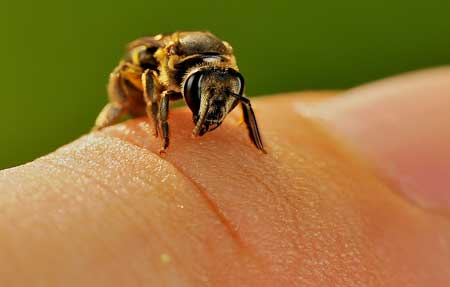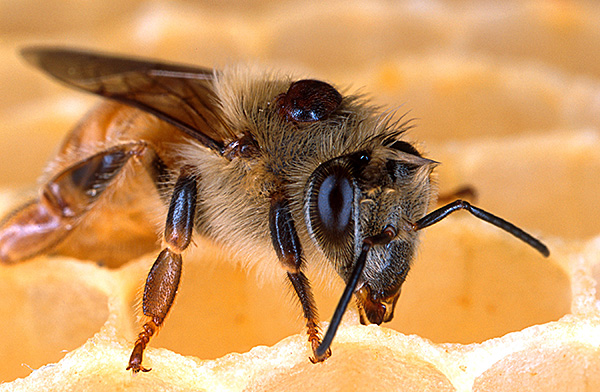Bee venom has started to be used in treating arthritis and other inflammatory and degenerative diseases. Scientific literature contains numerous articles on clinical trials in different countries, and the U.S. military has expanded research on the chemical components found in the bee venom. The venom is rich in active substances.
Honey bee venom contains at least 18 active substances.
Melittine, the most important substance, is one of the most potent anti-inflammatory agents known (100 times more potent than hydrocortisone). Adolapin is another powerful anti-inflammatory substance with a great analgesic role. Other substances are also involved in the inflammatory response of venom, with the softening of tissues and facilitating the flow of other agents.
When to use bee venom therapy
Bee venom therapy can be useful in a wide variety of situations. Many beekeepers has popularized this type of therapy in the late ’60s, they say that it is best to apply this type of therapy in any clinical situation where other treatments has failed. However, there are four situations in which venom is the most widely used in medicinal treatments.
Arthritis and other systemic inflammatory
Bee venom therapy can be useful in both rheumatoid and osteoarthritis, helping to reduce pain and swelling. In rheumatoid arthritis, rheumatoid nodules can lessen in size. Other connective tissue diseases such as scleroderma, can be treated this way.
Even systemic inflammation of joints, such as ulcerative colitis or even asthma, may bee treated by bee venom. In this case, venom stimulate the hypothalamus and pituitary gland, which will solve health problems.
Acute and chronic injuries
Inflammation and tendon injuries that occur in other areas respond well to bee venom therapy. In this case, anti-inflammatory effect is probably at the local level, involving the need for a response of cells in the immune level, and the foreign protein. Chronic back and neck pain may respond well to this treatment.
Wounds and scars
Wounds and scar tissues are softened by the substances in the venom and can be smooth and can regain normal color. Internal tissue injuries, occurring as a result of surgery, may respond to treatment over the area of the body.
Multiple sclerosis can be treated with bee venom
Using bee venom in these cases is still poorly understood and requires further studies. American specialists in immunology, are studying the effects of bee venom extract on patients suffering from multiple sclerosis. Hundreds of people who suffer from this disease are still looking for a specialist in bee venom therapy. Treatment is long and quite boring, but usually can be see increasing stability, lowering fatigue and spasm.
The use of venom
Bee venom therapy can be performed by a beekeeper, by another patient or relatives of the sick, provided they are taught to use the bees. A bee hive is made of or from a jar with tweezers, put on an area of the body where it will sting. Number, location and frequency of the stings depend on the patient and the troubles he faced. A simple method may just take a few stings, perhaps two or three per session for two to five sessions.
For a chronic disease like arthritis can take two or three times a week, several stings at a session for one to three months. Multiple sclerosis responds difficult to treatment, sometimes it can take months until patients feel more energetic. In these cases treatment is recommended for two to three times a week for six months until the first results can be seen, but there are cases in which the body responds more quickly.
Doctors use the injection of venom. There are doctors who use the therapy in their practices based on bee venom. They use the venom collected in sterilized vials and injecting it under the skin, sometimes mixed with a local anesthetic. Some say that using this method of venom collection is not such powerful, but in many situations is much more accessible and an easier way than to call a beekeeper or have to deal directly with the bees. Side effects that may occur after bee venom therapy are generally limited to inflammation and pain known in such cases. But there is risk of an allergic reaction to this poison and it is good to always do a test before treatment.

